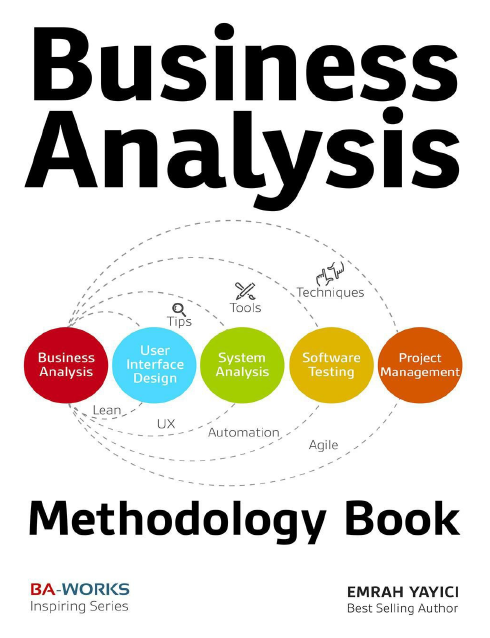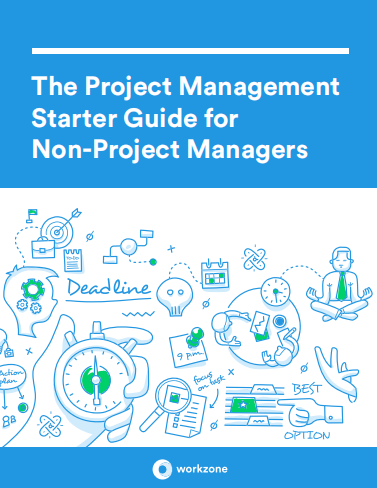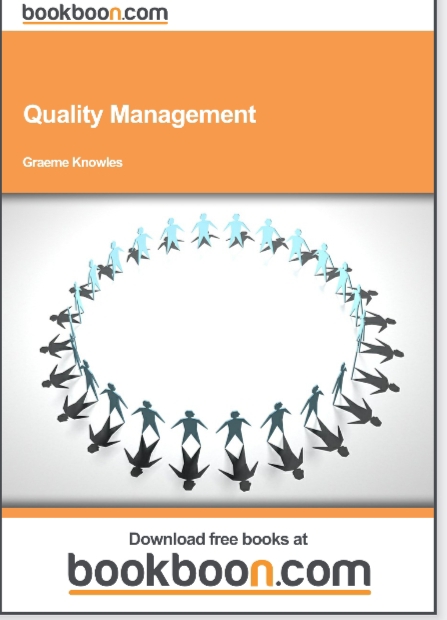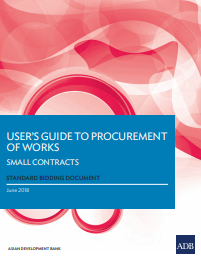Business & Management
The Business Student’s Guide To Sustainable Management Principles And Practice
Views : 5
The Business Student’s Guide To Sustainable Management Principles And Practice
Source: https://www.routledge.com
Edited By: Petra Molthan-Hill
Usually dispatched in 2 to 3 days
Usually dispatched in 2 to 3 days
Category:
Business & Management
Only logged in customers who have purchased this product may leave a review.
Related books
Business Analysis Methodology Book
Companies have to develop innovative and high-quality products faster than their competitors to create temporary monopoly periods with maximum profitability. However, they usually have tight deadlines and limited budgets for new product development projects. To overcome this challenge, high-performance companies apply a “lean” business analysis, design, and development approach that has its origins in the Toyota car production system. Lean mainly focuses on eliminating muda (waste) throughout the product development lifecycle (PDLC) and passing resource savings to innovative projects.
Business Analysis Methodology Book
Companies have to develop innovative and high-quality products faster than their competitors to create temporary monopoly periods with maximum profitability. However, they usually have tight deadlines and limited budgets for new product development projects. To overcome this challenge, high-performance companies apply a “lean” business analysis, design, and development approach that has its origins in the Toyota car production system. Lean mainly focuses on eliminating muda (waste) throughout the product development lifecycle (PDLC) and passing resource savings to innovative projects.
Project Management For Large, Complex Projects
Introduction:
This expert report on project management was commissioned by the Edinburgh Tram Inquiry to address general issues about the nature, purpose and application of project management, as well as specific questions about programme management and risk management. Traditional project management provides a set of processes, procedures and tools for managing projects on time, within budget and to the required specifications. These common processes are valuable for identifying the bodies of knowledge and detailed procedures required to set up and execute projects. However, traditional project management has been criticized in recent years for neglecting to consider the ‘strategic’ activities and decisions undertaken during the front-end planning stage of
projects, which play a vital role in defining the need for a project and determining whether the goal
is achieved. Traditional project management assumes that a one-size-fits-all approach – a simple, predictable and standardized model – is applicable to all types of projects. Recent research has emphasized the need for project management to be ‘adaptive’ and flexible to address the complexities, uncertainties and challenges surrounding each project. There are clearly no magical project management cures, and no single predictable strategy will be applicable to all large, complex, high-risk projects. But many infrastructure projects in the UK now recognize the need for solutions that are designed to deal with the specific challenges involved in planning and executing large, complex projects. Taken together, the strategic and adaptive approaches to project management identified in this report offer a more effective way of planning and managing large, complex projects.
Project Management For Large, Complex Projects
Introduction:
This expert report on project management was commissioned by the Edinburgh Tram Inquiry to address general issues about the nature, purpose and application of project management, as well as specific questions about programme management and risk management. Traditional project management provides a set of processes, procedures and tools for managing projects on time, within budget and to the required specifications. These common processes are valuable for identifying the bodies of knowledge and detailed procedures required to set up and execute projects. However, traditional project management has been criticized in recent years for neglecting to consider the ‘strategic’ activities and decisions undertaken during the front-end planning stage of
projects, which play a vital role in defining the need for a project and determining whether the goal
is achieved. Traditional project management assumes that a one-size-fits-all approach – a simple, predictable and standardized model – is applicable to all types of projects. Recent research has emphasized the need for project management to be ‘adaptive’ and flexible to address the complexities, uncertainties and challenges surrounding each project. There are clearly no magical project management cures, and no single predictable strategy will be applicable to all large, complex, high-risk projects. But many infrastructure projects in the UK now recognize the need for solutions that are designed to deal with the specific challenges involved in planning and executing large, complex projects. Taken together, the strategic and adaptive approaches to project management identified in this report offer a more effective way of planning and managing large, complex projects.
Quality Management
Introduction:
This study guide is designed to provide an overview of the key elements, important historical context and current debates in the field of Quality Management. It aims to give a coherent view of the underlying principles of quality management, and how these relate to practical application in a range of organizations. The tools and techniques which support the principles are not covered in detail in this guide, More information on these can be found in the companion guide: “Six Sigma: Principles and Practices” also available at Bookboon.com. The guide starts with a development of the theory in each area and then provides a contex tualisation which considers what the theory might mean for organizational practice. Due to the complexity of many of the issues addressed, it is possible to write much more on any single topic, but I have tried to cover most of the key points in order to provide a foundation, and further literature linked from the text allows the reader to investigate any topic in more depth if they wish. Finally, at the end of each chapter there are a number of questions for you to develop your thinking in the area.
Quality Management
Introduction:
This study guide is designed to provide an overview of the key elements, important historical context and current debates in the field of Quality Management. It aims to give a coherent view of the underlying principles of quality management, and how these relate to practical application in a range of organizations. The tools and techniques which support the principles are not covered in detail in this guide, More information on these can be found in the companion guide: “Six Sigma: Principles and Practices” also available at Bookboon.com. The guide starts with a development of the theory in each area and then provides a contex tualisation which considers what the theory might mean for organizational practice. Due to the complexity of many of the issues addressed, it is possible to write much more on any single topic, but I have tried to cover most of the key points in order to provide a foundation, and further literature linked from the text allows the reader to investigate any topic in more depth if they wish. Finally, at the end of each chapter there are a number of questions for you to develop your thinking in the area.
Guidelines For Drinking-Water Quality Management For New Zealand Chapter 2: Management Of Community Supplies
Introduction
This chapter discusses good management practices for community drinking-water supplies. A community drinking-water supply is a reticulated, publicly or privately owned, drinking-water supply connecting at least two buildings on separate titles, and serving at least 1500 person days a year (eg, 25 people at least 60 days per year). An integrated management system should be designed to meet the requirements of the Drinking-water Standards for New Zealand 2005 (revised 2008) (DWSNZ), statutory requirements and the consumers’ needs, as well as environmental and cultural considerations.
The most important constituents of drinking-water are undoubtedly those that are capable of having a direct impact on public health. It is up to the water suppliers to demonstrate to their consumers that the management of the water supply system is being undertaken in a responsible and efficient manner.
Guidelines For Drinking-Water Quality Management For New Zealand Chapter 2: Management Of Community Supplies
Introduction
This chapter discusses good management practices for community drinking-water supplies. A community drinking-water supply is a reticulated, publicly or privately owned, drinking-water supply connecting at least two buildings on separate titles, and serving at least 1500 person days a year (eg, 25 people at least 60 days per year). An integrated management system should be designed to meet the requirements of the Drinking-water Standards for New Zealand 2005 (revised 2008) (DWSNZ), statutory requirements and the consumers’ needs, as well as environmental and cultural considerations.
The most important constituents of drinking-water are undoubtedly those that are capable of having a direct impact on public health. It is up to the water suppliers to demonstrate to their consumers that the management of the water supply system is being undertaken in a responsible and efficient manner.
User’s Guide To Procurement Of Works
Introduction
The Standard Bidding Document for the Procurement of Works–Small Contracts (SBD Works-Small) has been prepared by the Asian Development Bank (ADB) for use in contracts involving “smaller” contracts—valued at generally less than $10 million by open competitive bidding. It is based on the Master Document for Procurement of Small Works, prepared by multilateral development banks and international financing institutions. It reflects the structure and the provisions of the Master Document, except where specific considerations within ADB have required a change. The SBD Works-Small follows a postqualification procedure that requires Bidders to submit the information pertaining to their qualifications together with their bids. In this event, it will be necessary to ensure that a Bidder’s risk of having its bid rejected on grounds of qualification is remote if due diligence is exercised by the Bidder during bid preparation. For that purpose, clear-cut, pass-fail qualification criteria need to be specified by the Employer in both the Invitation for Bids as well as the Bidding Document to enable Bidders to make an informed decision on whether to pursue a specific contract and, either to do so as a single entity or in Joint Venture. Postqualification criteria, requirements, and relevant forms for submission are covered in Section 3 (Evaluation and Qualification Criteria) and Section 4 (Bidding Forms). The SBD Works-Small is intended for both lump sum (activity schedule) and admeasurement (unit prices in a bill of quantities) types of contract, which are the most common in civil works contracting. Lump sum contracts are used particularly for building construction and other forms of construction where the works are well defined and are unlikely to change in quantity or specification, and where it is unlikely to encounter difficult or unforeseen site conditions (for example, hidden foundation problems). Otherwise, admeasurement contracts should be used. The main text is applicable to both types of contracts (lump sum and admeasurement). Fixed prices are provided as a default unless price adjustment is allowed and indicated in Section 2 (Bid Data Sheet). An important feature of the SBD Works-Small, which is only available in electronic format on the ADB website, is that it can be used with minimum changes, as it does not contain explanations, footnotes, or examples that should not form part of the Bidding Document. The provisions in Section 1 (Instructions to Bidders) and Section 7 (General Conditions of Contract) must be used with their text unchanged. This user’s guide is provided to guide employers in preparing a bidding document based on the SBD Works-Small for a single-stage: one-envelope bidding procedure. This guide includes the Bidding Process and the Invitation for Bids, which are not part of the Bidding Document. ADB welcomes any feedback or experiences from both Borrowers and Bidders on the use of its Standard Bidding Document. For information on procurement under ADB-financed projects, contact
User’s Guide To Procurement Of Works
Introduction
The Standard Bidding Document for the Procurement of Works–Small Contracts (SBD Works-Small) has been prepared by the Asian Development Bank (ADB) for use in contracts involving “smaller” contracts—valued at generally less than $10 million by open competitive bidding. It is based on the Master Document for Procurement of Small Works, prepared by multilateral development banks and international financing institutions. It reflects the structure and the provisions of the Master Document, except where specific considerations within ADB have required a change. The SBD Works-Small follows a postqualification procedure that requires Bidders to submit the information pertaining to their qualifications together with their bids. In this event, it will be necessary to ensure that a Bidder’s risk of having its bid rejected on grounds of qualification is remote if due diligence is exercised by the Bidder during bid preparation. For that purpose, clear-cut, pass-fail qualification criteria need to be specified by the Employer in both the Invitation for Bids as well as the Bidding Document to enable Bidders to make an informed decision on whether to pursue a specific contract and, either to do so as a single entity or in Joint Venture. Postqualification criteria, requirements, and relevant forms for submission are covered in Section 3 (Evaluation and Qualification Criteria) and Section 4 (Bidding Forms). The SBD Works-Small is intended for both lump sum (activity schedule) and admeasurement (unit prices in a bill of quantities) types of contract, which are the most common in civil works contracting. Lump sum contracts are used particularly for building construction and other forms of construction where the works are well defined and are unlikely to change in quantity or specification, and where it is unlikely to encounter difficult or unforeseen site conditions (for example, hidden foundation problems). Otherwise, admeasurement contracts should be used. The main text is applicable to both types of contracts (lump sum and admeasurement). Fixed prices are provided as a default unless price adjustment is allowed and indicated in Section 2 (Bid Data Sheet). An important feature of the SBD Works-Small, which is only available in electronic format on the ADB website, is that it can be used with minimum changes, as it does not contain explanations, footnotes, or examples that should not form part of the Bidding Document. The provisions in Section 1 (Instructions to Bidders) and Section 7 (General Conditions of Contract) must be used with their text unchanged. This user’s guide is provided to guide employers in preparing a bidding document based on the SBD Works-Small for a single-stage: one-envelope bidding procedure. This guide includes the Bidding Process and the Invitation for Bids, which are not part of the Bidding Document. ADB welcomes any feedback or experiences from both Borrowers and Bidders on the use of its Standard Bidding Document. For information on procurement under ADB-financed projects, contact
Project Management Plan
Introduction:
The Oregon Public Utility Commission (PUC or Commission) relies on a variety of applications to support its business functions related to the conduct of official proceedings. These include a custom-built legacy “BizApps” docketing system and Huddle, a third party service for eDiscovery. The PUC seeks to replace these systems with an integrated, cohesive, and efficient solution for internal and external stakeholders doing business with the Commission. By replacing the outdated and unsupported docketing system, PUC will be better equipped to serve stakeholders and the citizens of Oregon. The Dockets and Discovery project management plan defines how the Dockets and Discovery project is executed, monitored and controlled, and closed.
Project Management Plan
Introduction:
The Oregon Public Utility Commission (PUC or Commission) relies on a variety of applications to support its business functions related to the conduct of official proceedings. These include a custom-built legacy “BizApps” docketing system and Huddle, a third party service for eDiscovery. The PUC seeks to replace these systems with an integrated, cohesive, and efficient solution for internal and external stakeholders doing business with the Commission. By replacing the outdated and unsupported docketing system, PUC will be better equipped to serve stakeholders and the citizens of Oregon. The Dockets and Discovery project management plan defines how the Dockets and Discovery project is executed, monitored and controlled, and closed.















Reviews
There are no reviews yet.